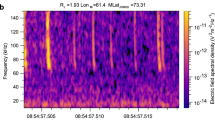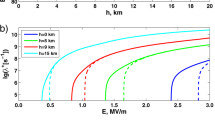Abstract
PROF. ARMSTRONG holds that Simpson's theory of the thunderstorm is invalid because its physical basis is unsound. He believes that it is not possible for water-drops to become electrically charged by simple rupture in air. If Simpson's paper (Phil. Trans., A, vol. 209, p. 379, 1909) is consulted, it will be found that the author of the theory has established quite definitely that when water-drops in contact with air only are broken by an air-current, the resulting smaller drops are positively charged, the corresponding negative charge going to the air as an excess of negative ions. The present writer is all the more confident of the reality of this effect, as in subsequent experiments (Proc. Roy. Soc., A, vol. 90, p. 531, 1914), with a form, of apparatus quite different from that used by Simpson, he obtained the same results. Thus, whatever be the grounds on which Prof. Armstrong declines to believe in the possibility of an electrical separation as the result of a “mere division of water-drops against an air-current”, there is no doubt that such a separation does occur: !
This is a preview of subscription content, access via your institution
Access options
Subscribe to this journal
Receive 51 print issues and online access
$199.00 per year
only $3.90 per issue
Buy this article
- Purchase on Springer Link
- Instant access to full article PDF
Prices may be subject to local taxes which are calculated during checkout
Similar content being viewed by others
Author information
Authors and Affiliations
Rights and permissions
About this article
Cite this article
NOLAN, J. Origin of Atmospheric Electricity in Thunderstorms. Nature 113, 354–355 (1924). https://doi.org/10.1038/113354b0
Issue Date:
DOI: https://doi.org/10.1038/113354b0
Comments
By submitting a comment you agree to abide by our Terms and Community Guidelines. If you find something abusive or that does not comply with our terms or guidelines please flag it as inappropriate.



